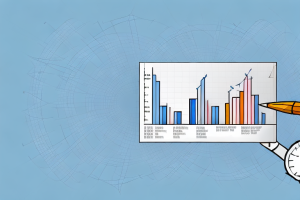Understanding the importance of 401k savings for retirement
As individuals near the age of 65, the average 401k balance becomes a critical point of consideration. Many people rely on their 401k accounts as a primary source of income during retirement, making it essential to assess the adequacy of their savings. A 401k plan allows individuals to contribute a portion of their pre-tax income, which can then grow over time through investments, such as stocks, bonds, and mutual funds. The goal is to accumulate enough funds to provide financial stability throughout retirement. Consequently, understanding the factors that influence the average 401k balance at age 65 is crucial to ensuring a comfortable and worry-free retirement.
One of the key factors that can influence the average 401k balance at age 65 is the contribution rate. The amount an individual contributes to their 401k plan on a regular basis can have a significant impact on the overall balance. Those who consistently contribute a higher percentage of their income are likely to have a larger nest egg by the time they reach retirement age. Additionally, the length of time an individual has been contributing to their 401k can also play a role in the average balance. Starting early and contributing consistently over a long period allows for more time for investments to grow and compound, potentially resulting in a higher balance at retirement.
How does the average 401k balance vary for different age groups?
The average 401k balance varies significantly among different age groups. Younger individuals usually have lower balances due to shorter periods of work and fewer contributions. However, as individuals approach retirement age, they typically have a longer history of contributions, allowing their 401k balances to grow. Factors such as income level, employer contributions, annual rates of return, and investment decisions also impact the size of one’s 401k balance at age 65. Therefore, it is important to recognize that the average 401k balance can vary greatly based on an individual’s unique circumstances.
Exploring the factors that impact 401k balances at age 65
Several factors play a crucial role in determining the average 401k balance at age 65. Income level is one such factor as individuals with higher incomes tend to contribute more to their 401k accounts. Additionally, the employer’s contribution policy significantly affects the final balance, as employers may match a portion of the employee’s contribution. The diversity of investment choices and their performance over time also impact the value of a 401k account. Other factors, such as early withdrawals, loan defaults, and fees, can negatively impact 401k balances. Therefore, it is essential to carefully consider these factors to ensure a sufficient 401k balance at age 65.
Analyzing the average 401k balance trends over the years
Examining the average 401k balance trends over the years provides valuable insights into how individuals have been saving for retirement. While the specific amounts can vary depending on economic conditions and individual circumstances, research shows that the average 401k balance has been steadily increasing over time. This positive trend can be attributed to factors such as increased awareness of the importance of retirement savings, improved investment strategies, and higher employer contributions. However, it is important to remember that these trends are influenced by many variables, making it crucial for individuals to take a proactive approach to continually monitor and adjust their 401k savings strategy.
Is the average 401k balance enough to sustain retirement at age 65?
Whether the average 401k balance is enough to sustain retirement at age 65 largely depends on an individual’s lifestyle and anticipated expenses. Financial experts recommend aiming for a retirement income that is at least 70-80% of pre-retirement income to maintain a comfortable standard of living. While the average 401k balance at age 65 may partially cover these expenses, it may not be sufficient on its own. Other sources of income, such as social security benefits or additional savings, should be considered to ensure financial security throughout retirement. It is crucial for individuals to carefully evaluate their retirement goals and create a comprehensive plan that goes beyond relying solely on their 401k balance.
Strategies to boost your 401k balance before reaching age 65
For individuals looking to maximize their 401k balance before reaching age 65, there are several strategies to consider. One effective approach is to increase contributions to take full advantage of employer matching contributions. Maximizing contributions early on and consistently throughout one’s career allows for longer periods of growth and compounding interest. Investing in a diverse range of assets based on risk tolerance and time horizon can also help boost 401k balances. Additionally, minimizing or avoiding early withdrawals and loan defaults can ensure that the funds stay invested, benefiting from long-term growth. It is important to consult with a financial advisor to develop a personalized strategy that aligns with individual goals and circumstances.
Comparing the average 401k balance for men and women at age 65
When examining the average 401k balance for men and women at age 65, it is important to consider the gender pay gap and differences in working patterns. Historically, women have faced unique challenges such as wage disparities and career interruptions due to caregiving responsibilities, which can impact their ability to accumulate wealth in their 401k accounts. As a result, studies have shown that women typically have lower average 401k balances at age 65 compared to men. However, it is important to note that these gender disparities are gradually decreasing as workplace equality improves, and women are becoming more empowered in managing their finances. It is essential to address these disparities and advocate for equal opportunities to ensure a more equitable retirement for all individuals.
Tips for maximizing your 401k savings as you approach retirement
As individuals approach retirement, it becomes crucial to strategize and maximize their 401k savings. One effective approach is to assess your risk tolerance and adjust your investment portfolio accordingly. As retirement age nears, it may be prudent to gradually shift to more conservative investments to protect accumulated wealth. Regularly reviewing and adjusting your contributions to reflect changes in income can also help maximize savings. Additionally, taking advantage of catch-up contributions allows individuals aged 50 and above to contribute additional funds beyond the standard yearly limits. It is important to stay informed about investment trends, seek professional advice when needed, and continuously evaluate and adjust your 401k savings strategy to ensure a solid financial foundation for retirement.
Examining the impact of market fluctuations on the average 401k balance at age 65
The average 401k balance at age 65 can be heavily influenced by market fluctuations. Volatility in the stock market can lead to both gains and losses in investment portfolios. While short-term market fluctuations may cause temporary declines, it is important to remember that long-term investing allows for the potential recovery of losses and growth in the value of investments. Diversifying investments across different asset classes and regularly rebalancing your portfolio can help mitigate risks associated with market fluctuations. Remaining focused on long-term goals and avoiding emotional reactions to market swings is key to ensuring the resilience of your 401k balance as you approach retirement.
How does income level affect the average 401k balance at retirement?
Income level plays a significant role in determining the average 401k balance at retirement. Generally, individuals with higher incomes have the potential to contribute more substantial amounts to their 401k accounts. Additionally, higher earners often have access to more generous employer matching contributions, which can further boost their savings. However, it is crucial to remember that a higher income does not automatically guarantee a sufficient 401k balance. Personal financial management, budgeting, and making prudent investment decisions are vital for individuals at all income levels to ensure a healthy and sustainable 401k balance at retirement.
Understanding the role of employer contributions in boosting your 401k balance at age 65
Employer contributions play a vital role in boosting an individual’s 401k balance at age 65. Many employers offer matching contributions, meaning they will match a percentage of the employee’s contributions up to a certain limit. Employer matches are essentially free money, providing an opportunity for employees to accelerate the growth of their 401k accounts. Taking full advantage of employer matching contributions can significantly impact the final account balance. It is essential for individuals to review their employer’s matching policy and make necessary adjustments to their contributions to maximize their 401k balance potential.
Common mistakes to avoid when managing your 401k savings for retirement
When managing 401k savings for retirement, there are several common mistakes that individuals should be aware of and avoid. One common mistake is failing to contribute enough to take full advantage of employer matching contributions. Not maximizing contributions means missed opportunities for free money and slower growth of the 401k balance. Another mistake is constantly changing investment strategies based on short-term market fluctuations. Frequent trading and trying to time the market can lead to unnecessary fees and potential losses. Additionally, cashing out or taking early withdrawals from a 401k account should be avoided if possible, as it can incur early withdrawal penalties and permanently reduce the account balance. It is important to educate oneself, seek professional advice when needed, and make informed decisions to avoid these common pitfalls when managing 401k savings.
Exploring alternative retirement savings options beyond a 401k plan
While a 401k plan is a valuable retirement savings tool, it is not the only option available. Exploring alternative retirement savings options can provide individuals with additional financial security. Individual Retirement Accounts (IRAs) offer tax advantages similar to 401k plans, allowing individuals to contribute and invest funds for retirement. Roth IRAs, specifically, offer tax-free withdrawals in retirement. Other investment vehicles, such as taxable brokerage accounts, real estate, and annuities, can also supplement 401k savings. Diversifying retirement savings across multiple avenues can help individuals build a more robust and flexible financial foundation for their retirement years.
Tips for assessing and adjusting your investment strategy as you near age 65
As individuals near age 65, assessing and adjusting their investment strategy becomes crucial. One important consideration is gradually reducing the risk exposure in your investment portfolio to protect accumulated wealth. Shifting assets to more conservative investments, such as bonds or fixed-income securities, can help safeguard against market volatility. It is also important to regularly review and rebalance your investment portfolio to maintain an appropriate asset allocation. Another tip is to assess and align your investment strategy with your anticipated retirement expenses and income needs. Understanding your retirement goals and risk tolerance will help inform your investment decisions as you approach age 65.
In conclusion, the average 401k balance for a 65-year-old varies significantly based on individual circumstances and financial decisions made throughout one’s working life. Understanding the factors that impact 401k balances, such as income level, employer contributions, investment performance, and market fluctuations, is crucial for individuals to plan and ensure an adequate retirement income. Utilizing strategies to boost 401k savings, addressing gender disparities, and exploring alternative retirement savings options are essential steps individuals can take to enhance their financial security. Through careful management, regular assessments, and informed decision-making, individuals can increase the likelihood of achieving a comfortable and worry-free retirement.



